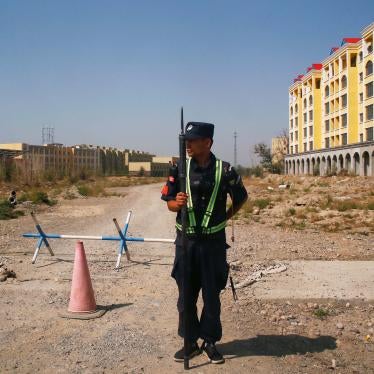HONG KONG — The eruption of ethnic violence in China’s Xinjiang Uighur Autonomous Region, the most deadly recorded in decades, seems to have taken both Beijing and the world by surprise. It should not have.
The violence, coming on the heels of massive protests in Tibet less than 18 months ago, reflects the profound failure of Beijing’s policies toward national minorities, whose areas represent almost four-fifths of the country’s landmass but whose population makes up only 8 percent of China’s 1.3 billion people.
The Uighur people, much like the Tibetans, have a history, culture, religion and language distinct from the rest of China. Their homeland, the ring of oases that formed the backbone of the Silk Road in ancient times, was only incorporated into the Chinese empire in the 18th century.
And the effective colonization of Xinjiang only started after 1950s, when Beijing began to settle People’s Liberation Army soldiers who had put down the short-lived independent East Turkestan Republic (1944-1949) on military state farms. The proportion of Han Chinese in the population of Xinjiang leaped from 6 to 40 percent as a result of state-sponsored population transfers from other parts of China.
A second massive assimilation drive was initiated in the 1990s, prompted in part by the collapse of the Soviet Union in 1991 and Beijing’s fear of instability in the region. This time, instead of relying on forcible population transfers, Beijing created economic incentives to attract new Han settlers. In less than a decade, an ambitious program called the “Big Development of the Northwest” brought between one and two million new Chinese migrants to Xinjiang.
Economic development surged, spurred by a combination of massive subsidies, oil exploitation and rapid urbanization. But the Uighurs were not part of the rising tide. Resentment over job discrimination and loss of lands swelled, combined with anger at China’s religion policies and the stream of new settlers.
The government’s response was purely repressive. Already sharp limits on religious and cultural expression were further tightened. Any expression of dissent became synonymous with advocating “separatism” — a crime under Chinese law that can carry the death penalty.
Any sign of ethnic distinctiveness outside of the sanitized version promoted by the state was denounced as a plot by “separatist forces abroad.” After a failed uprising in the city of Yining in February 1997, the authorities launched a massive crackdown that led to tens of thousands of arrests and dozens of executions.
For most Uighurs, Xinjiang increasingly became a police state, where they lived in fear of arrest for the slightest sign of disloyalty toward Beijing.
Even prison officials started to complain to Beijing that prison and labor camps across the region had become jam-packed. Isolated acts of anti-state violence, such as the assassination of Uighur “collaborators,” attacks against police stations and the explosion of two bombs in Urumqi buses in February 1998 only reinforced the determination of the state to increase its repression.
After the Sept. 11 attacks in the U.S., the Chinese began to justify its campaigns in Xinjiang as a contribution to the global war on terror. China also used its growing international influence to secure cooperation from neighboring states to arrest and deport Uighurs who had fled persecution.
Although there is no dispute that clandestine Uighur groups have from time to time carried out violent attacks — most recently in a series of bombings and attacks on Chinese soldiers just before the Olympic Games — the massive propaganda offensive about the threat of “East Turkestan” terrorism drove Chinese public opinion toward an even more negative perception of the Uighur people, who in turn felt increasingly ostracized and discriminated against.
Beijing’s accelerated attempt over the past few years to forcibly refashion Uighur identity has also fueled growing resentment. Following Xinjiang Party Secretary Wang Lequan’s declaration in 2002 that the Uighur language was “out of step with the 21st century,” the government started to shift the entire education system to Mandarin, replacing Uighur teachers with newly arrived Han Chinese. The authorities also organized public burnings of Uighur books. Control over religion was extended last year to prohibit traditional customs such as religious weddings, burials or pilgrimages to the tombs of local saints.
Earlier this year, the government suddenly announced plans to raze the city of Kashgar, the centuries-old cultural center of the Uighur civilization and one of the only remaining examples of traditional central Asian architecture. In a few weeks, the old city will have almost entirely disappeared, forcing out 50,000 families to newly constructed, soulless modern buildings.
This is the backdrop against which Uighurs reacted to graphic images circulating on the Internet last week of Uighur workers being beaten to death by Chinese coworkers in a Guangdong factory. They took to the streets.
Unless the government addresses the root causes of ethnic tensions and ends its systemic human rights violations, the chances of more violence will remain high.
Nicholas Bequelin is a senior Asia researcher for Human Rights Watch.






